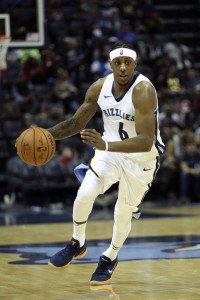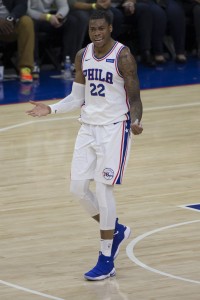NBA G League teams have no shortage of ways to stock their rosters. They can add players through the G League draft, carry players on two-way contracts, acquire players via waivers, take on affiliate players from NBA training camps, and sign players they find in preseason tryout camps. Yet perhaps the most noteworthy players to pass through the G League come via NBA assignment.
The players assigned to the G League by NBA teams aren’t quite like other G Leaguers. NBA players receive their full NBA salaries while on G League assignment, whereas the G Leaguers without an NBA contract receive far more modest annual earnings that currently top out at about $26K.
Still, a G League assignment may come at a cost for an NBA player, since performance in the G League doesn’t count toward any incentive clauses built into an NBA contract. So if a player heads down to the G League on a rehab assignment and plays in a couple games for his NBA club’s G League affiliate, none of the numbers he puts up during that assignment would count toward the performance incentives built into his contract with the big club.
Of course, generally speaking, only longer-tenured veteran NBA players have incentives in their contracts, and most of those players won’t be assigned to the G League. Virtually all of the NBA players assigned to the G League have less than three full years of experience. That’s partly because NBA teams want to give their young players some extra seasoning — after all, before being re-branded as part of a sponsorship agreement with Gatorade, the G League was known as the “Development League” (D-League).
More importantly, players in their first, second or third NBA seasons are the only ones whom NBA teams can unilaterally send down to the G League. Otherwise, teams must get the consent of the players’ union as well as the player. It does happen on occasion though — fourth-year Raptors forward Bruno Caboclo has consented to multiple G League assignments so far this season, and Tony Parker has accepted G League assignments from the Spurs as well, as part of his injury rehab.
Once a player has been assigned to the G League, he can remain there indefinitely, and lengthy stints are not uncommon. However, since there’s no limit to the number of times an NBA team can assign and recall a player, assignments can also be very brief, particularly now that many teams are in close geographical proximity with their G League affiliates. In one case this season, the Grizzlies recalled Ivan Rabb from the Memphis Hustle, then assigned and recalled him again, all in the span of a few hours, in order to get him as much practice time as possible.
The Grizzlies are one of 26 NBA teams that either own their G League teams outright or operate the basketball operations of their affiliates in “hybrid” partnerships with local ownership groups. Teams that have these arrangements can set up a unified system in which the G League club runs the same offensive and defensive schemes and coaches dole out playing time based on what’s best for the parent club. That gives these NBA teams an advantage, so it’s no surprise that we’re moving toward every NBA team having a one-to-one affiliation — as recently as 2012/13, only 11 teams had such an arrangement.
Four NBA teams – the Nuggets, Pelicans, Trail Blazers, and Wizards – don’t have a G League affiliate of their own in 2017/18. However, those teams can still assign players to the G League via the “flexible assignment” rule. If, for instance, the Nuggets want to send Tyler Lydon to a G League team, any of the 26 teams may volunteer to accept him. Denver can choose from those clubs if there are multiple volunteers, but if no G League team raises its hand, the G League will randomly choose one of its teams to accept Lydon.
For more on the G League, check out our list of affiliations for this year and bookmark our G League news archive to track the latest updates on NBA players being assigned to or recalled from the G League. Be sure to check out our FAQ on two-way contracts as well — players on two-way deals can’t technically be assigned to and recalled from the G League, but they can be transferred back and forth between the NBA and the G League on a limited basis.
Note: This is a Hoops Rumors Glossary entry. Our glossary posts will explain specific rules relating to trades, free agency, or other aspects of the NBA’s Collective Bargaining Agreement. Larry Coon’s Salary Cap FAQ was used in the creation of this post.
Versions of this post were initially published in 2012, 2013, and 2014 by Luke Adams and Chuck Myron.



